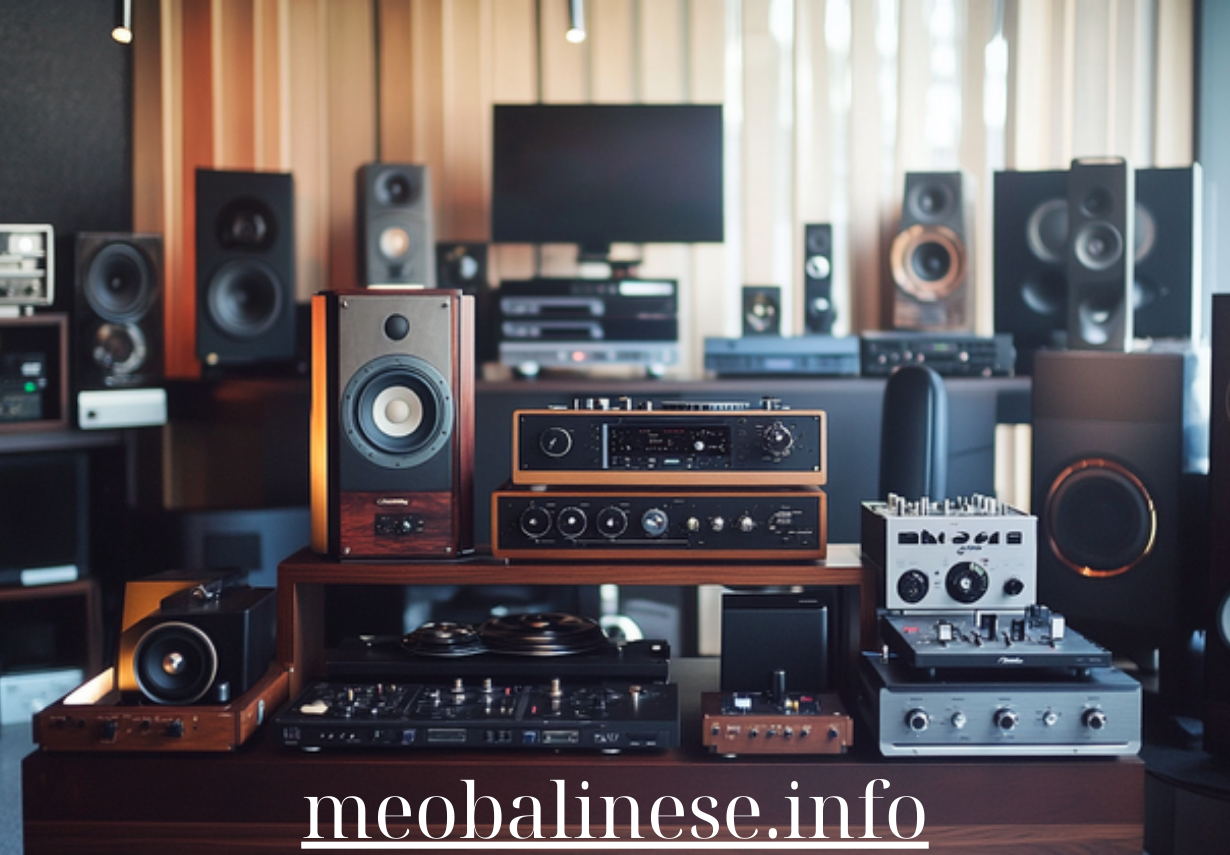The world of audio technology is constantly evolving, with new innovations improving how we listen to music, watch movies, play games, and interact with digital media. These trends focus on enhancing audio quality, portability, interactivity, and immersive experiences. Here are the recent audio technology trends that are reshaping the way we experience sound today.
1. Spatial Audio and 3D Sound
Spatial audio and 3D sound technologies are among the most significant advancements in audio, providing listeners with a fully immersive experience by creating a sense of depth and direction in sound.
Key Developments:
- Apple’s Spatial Audio: Introduced with Apple Music and devices like AirPods Pro and AirPods Max, spatial audio provides a 360-degree sound experience, making users feel like they’re surrounded by the music or sounds in movies and games. It uses dynamic head tracking to adjust the audio positioning based on the listener’s movements.
- Dolby Atmos for Headphones: Expanding beyond home theaters, Dolby Atmos now offers 3D audio for headphones, allowing users to experience spatial sound on any device. It enhances immersion in gaming, music, and streaming services.
- Sony 360 Reality Audio: Sony’s 360 Reality Audio creates a multi-dimensional sound experience for music, placing instruments and vocals all around the listener, making them feel as if they are in the center of a live performance.
Application: Spatial audio is widely used in music streaming, virtual reality (VR) experiences, gaming, and film production to enhance immersion and create a richer, more engaging audio environment.
2. True Wireless Earbuds with Advanced Features
The popularity of true wireless earbuds has surged, driven by advancements in sound quality, battery life, and smart features like active noise cancelling (ANC) and transparency modes.
Key Developments:
- Active Noise Cancelling (ANC): Many high-end wireless earbuds, such as the Sony WF-1000XM5 and Apple AirPods Pro 2, now offer ANC, effectively blocking out external noise to provide a more focused listening experience.
- Adaptive Sound Technology: Some earbuds use AI to automatically adjust sound settings based on the listener’s environment. This technology optimizes audio for different activities, like commuting, working, or exercising.
- Longer Battery Life and Fast Charging: Improvements in battery efficiency have allowed true wireless earbuds to offer longer playback times, with some models like the Jabra Elite 7 Pro providing up to 9 hours of continuous use. Fast charging features also ensure that users can get hours of playback from just a few minutes of charging.
Application: True wireless earbuds are perfect for everyday listening, fitness activities, and travel, offering premium audio without the hassle of cords.
3. Smart Speakers with Enhanced Audio Performance
Smart speakers continue to gain popularity, blending high-quality sound with voice assistant integration and smart home control. New models focus on delivering better audio performance while retaining the convenience of voice-controlled features.
Key Developments:
- Amazon Echo Studio: This smart speaker offers immersive 3D audio with support for Dolby Atmos. It delivers room-filling sound while maintaining its role as a hub for controlling smart home devices.
- Apple HomePod (2nd Generation): Apple’s latest HomePod focuses on delivering spatial audio in the home, with rich bass and dynamic sound while supporting Siri for smart home management and music playback control.
- Google Nest Audio: Google’s latest smart speaker is designed to offer enhanced audio quality, with improved bass and clearer highs, making it ideal for playing music, podcasts, and smart home integration.
Application: Smart speakers are increasingly used in smart home systems, offering a combination of high-quality audio and seamless interaction with virtual assistants for tasks like controlling lights, locks, thermostats, and streaming media.
4. Hi-Res Audio Streaming Services
The rise of Hi-Res Audio streaming services reflects the growing demand for studio-quality music, offering superior sound resolution for audiophiles who want the highest fidelity possible.
Key Developments:
- Apple Music Lossless Audio: Apple Music introduced lossless audio streaming, offering users CD-quality (16-bit/44.1kHz) and higher resolution tracks up to 24-bit/192kHz.
- TIDAL HiFi Plus: TIDAL remains one of the top choices for audiophiles, offering high-resolution streaming with Master Quality Authenticated (MQA) tracks, which delivers studio-level sound quality.
- Amazon Music HD: This service offers high-quality streaming with millions of songs in CD-quality and Ultra HD, making it a competitive option for those seeking Hi-Res Audio without switching to dedicated audiophile platforms.
Application: Hi-Res Audio streaming services are designed for music enthusiasts, audiophiles, and professionals who prioritize superior sound quality and dynamic range in their listening experience.
5. Wireless Home Audio Systems and Multi-Room Audio
Wireless home audio systems that enable multi-room setups are growing in popularity, allowing users to stream music seamlessly throughout their homes without being tethered to cables or traditional audio systems.
Key Developments:
- Sonos: Known for its easy-to-use multi-room audio systems, Sonos remains a leader in wireless home audio. Newer models like the Sonos Arc soundbar support Dolby Atmos, bringing immersive surround sound to living rooms while connecting with other Sonos speakers for synchronized audio across rooms.
- Bose SoundTouch: Bose offers a robust multi-room audio system that delivers deep bass and clear sound, making it ideal for large spaces. Its app-based controls make it easy to manage playlists, volume, and speaker groupings.
- Yamaha MusicCast: Yamaha’s MusicCast system allows users to stream music to multiple rooms and devices, with the ability to integrate with home theater systems, soundbars, and receivers for a comprehensive audio experience.
Application: Wireless home audio systems are ideal for users seeking a connected audio experience across their entire home. They are perfect for parties, multi-room audio setups, and integrating with smart home systems.
6. Audio Augmented Reality (AR) and Immersive Experiences
Audio augmented reality (AR) is an emerging trend that enhances the real-world environment with spatial audio, providing users with more immersive experiences in gaming, fitness, navigation, and more.
Key Developments:
- Bose Frames: Bose Frames are audio sunglasses with built-in speakers that deliver spatial audio for immersive outdoor listening without the need for earbuds or headphones. They allow users to hear music and phone notifications while remaining aware of their surroundings.
- Echo Frames: Amazon Echo Frames integrate Alexa voice control and provide spatial audio directly from the frames, allowing users to interact with their smart devices without headphones or speakers.
- Spatialized Navigation and Fitness Apps: Audio AR is being used in fitness apps like Zwift and RunGo, providing real-time audio feedback to guide users during workouts. Audio AR is also being explored for indoor navigation in large venues or city walking tours, creating an immersive navigation experience.
Application: Audio AR is particularly useful for outdoor activities, fitness training, and gaming, where users can experience immersive soundscapes while staying connected to the physical world.
7. AI and Machine Learning in Audio Enhancement
Artificial Intelligence (AI) and machine learning are being integrated into audio systems to optimize sound quality, personalize listening experiences, and improve audio editing tools.
Key Developments:
- AI-Powered Audio Personalization: AI technology is being used in headphones, such as the Nuraphone, which adapts audio output based on the user’s hearing profile. This creates a customized listening experience tailored to each individual.
- Audio Restoration and Noise Reduction: AI-based audio processing tools, like iZotope RX software, use machine learning to restore damaged audio, remove background noise, and clean up recordings with remarkable precision. This technology is transforming audio production in music and podcasts.
- Voice Enhancement: Companies like NVIDIA are developing AI-based voice enhancement software that removes background noise in real time, making it useful for virtual meetings, streaming, and content creation.
Application: AI in audio is particularly beneficial for content creators, music producers, and professional audio engineers who seek advanced tools for mixing, editing, and personalizing sound experiences.
Conclusion: The Future of Audio Technology
The recent trends in audio technology—ranging from immersive spatial sound to wireless, multi-room setups and AI-driven audio personalization—are transforming how we experience and interact with sound. As advancements continue, we can expect even more innovative ways to enhance our auditory experiences, whether we’re listening to music, gaming, watching movies, or engaging with augmented reality. With the rapid pace of development, the future of audio technology promises to be more immersive, convenient, and personalized than ever before.



